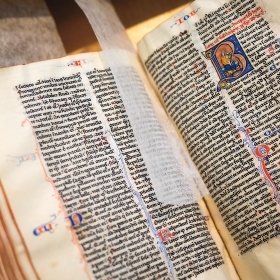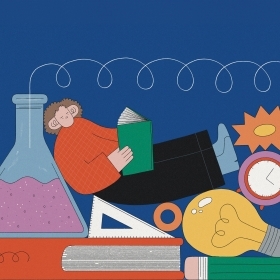The spring of my sophomore year at Wellesley, with great relief, I declared myself an English major.
I had previously explored classes on the pre-med track and considered majoring in biological sciences. But I far preferred chewing over word choice in Louise Glück’s poems and scribbling questions in the margins of my classmates’ short stories. My father, who worked in tech, was less than jubilant about my new major. He came around once I had turned my writing and analytical skills into a career in communications and journalism. When my youngest brother declared himself an English major at Tufts, my dad barely batted an eye.
Many students today follow a similarly indirect path to their major, writes Catherine O’Neill Grace, senior associate editor of this magazine, in “What’s Your Major?” As ever, Wellesley encourages this kind of exploration across disciplines, in keeping with its liberal arts tradition.
Of course, over the decades, there have been shifts in the popularity of majors. Notably, there are more science majors today than when I was a student 25 years ago. As Grace reports, recent data show that more than 50% of Wellesley students have at least one major that was in STEM; 30% have at least one major in humanities. At the same time, as President Paula A. Johnson writes in her column, some of the biggest events on campus this spring have been related to the humanities, including the exhibition at the Davis Museum of the work of groundbreaking artist Lorraine O’Grady ’55 (who earned a B.A. in economics—any path is possible with any major).
Students continue to have exceptional experiences in Wellesley’s humanities classes, too. I recently spoke with Sarah Wall-Randell ’97, professor of English, and Simon Grote, associate professor of history, about their consistently oversubscribed team-taught course, ENG/HIST 221: The Renaissance (“Rethinking the Renaissance”). I learned about a recent visit to Special Collections, where students in the class got to handle manuscripts made during the Renaissance, the dawn of print. Ruth R. Rogers, curator of Special Collections, describes the experience as “holding hands across time” with the books’ makers. These visceral experiences give students the ability to better place writers—and themselves as readers—within a particular moment in history and are one of the reasons why studying the humanities at Wellesley is so special. If I were a student today, I’d declare myself an English major in an instant.







